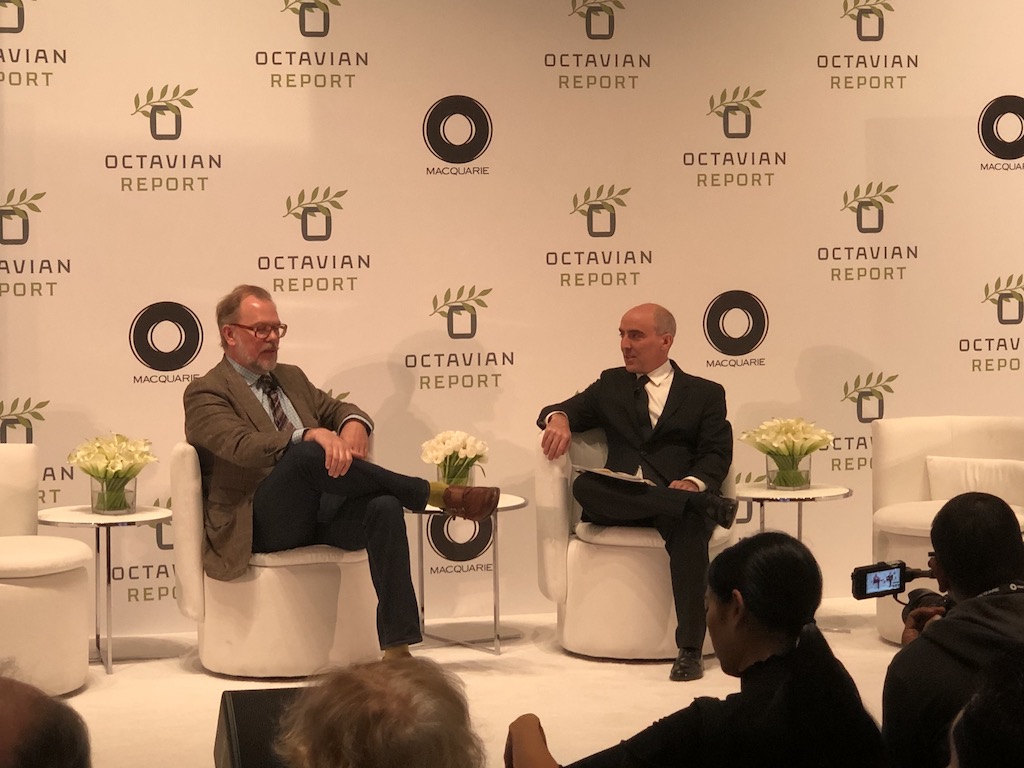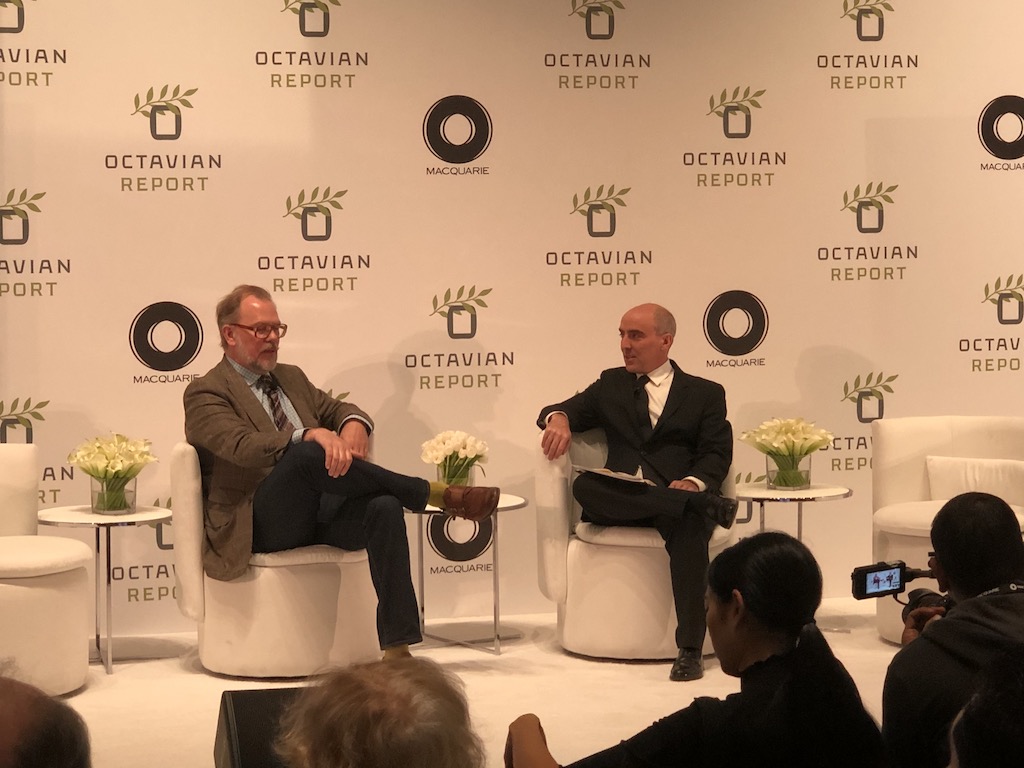[ad_1]

John Currin and Richard Hurowitz at the Octavian Forum in New York.
COURTESY BLUE MEDIUM
On Wednesday, the Octavian Report—a publication “by leaders, for leaders,” to borrow its words—held its annual Octavian Forum at Sotheby’s in New York. The lineup for the event included former Spanish prime minister José María Aznar, investor and journalist Zachary Karabell, and author Elliot Ackerman, who discussed everything from the state of democracy to climate change.
After a lunch recess at which hors d’oeuvres circulated, it was time to hear from artist John Currin, whose paintings typically depict women, with Old Master panache, in modes that are ribald, satirical, bizarre, or all those things at once. Currin, as it happens, is an Octavian Report board member and created a painting of Desdemona, the hapless bride of Othello, to accompany an interview that recently ran in its pages between the late literary critic Harold Bloom and Richard Hurowitz, the publisher of the Octavian Report.
Talking about that work at Sotheby’s with Hurowitz, Currin said it had taken about a year and a half to make. “I might consider Iago now—I go from male mode to female mode and back—but I spend much more time in female mode,” he said. But he’s still not sure he’s done with the painting, saying that Desdemona looks “like she’s gone to college and come back with an ill-advised style.” (Judge for yourself, on the publication’s website.)
When the question of inspiration came up, Currin listed Botticelli, Velázquez, Caravaggio, and Poussin among his favorite artists, but it’s not just the big names that interest him. Here’s Currin:
“I’m a big fan of minor paintings from any period. . . . I’ve always like rococo art because on the surface it’s insincere, fluttery, very surface-y painting and therefore much more accessible to a 21st-century artist.”
Asked how he thinks visual art of the current moment will be viewed in the future, he said this to say:
“I think most things are ugly and stupid, but that’s probably been the case [in past eras]. And the ugly stupid things get forgotten quickly. On the other hand, I remember when I was much younger I made a timeline chart for myself of when everybody lived, when everybody was like 30 years old. And, my god, it was like 1501 or 1505, there were like 25 of those people—from Bosch to Leonardo. They all showed up. And then you go through just nothing for a while, and then another big cohort pops up.”
Once audience member declared that he had a “vulgar question” for Currin: do the tremendous prices for contemporary art impact his outlook as an artist? The painter:
“If people stop buying my work it affects me. I don’t mean that to sound flippant. . . . I feel so inauthentic in so many other ways that whether I deserve the money or not is way, way, way down on the list. At the center of my work is more of an existential inauthenticity, rather than wondering whether I deserve money or someone else deserves money or just the general viewpoint of being pissed at somebody else’s fortune.”
Currin also shared a few thoughts that might be useful to aspiring artists, minting a new aphorism in the process: “It doesn’t take a long time to paint well—it takes a long time to paint badly.”
[ad_2]
Source link

